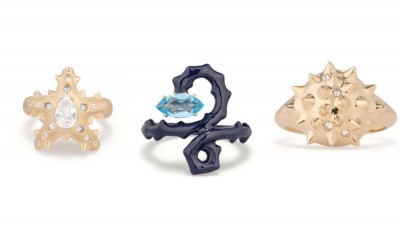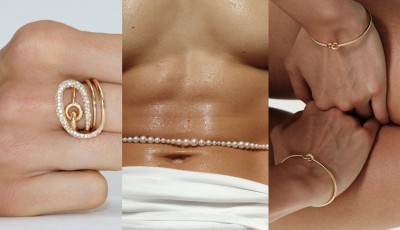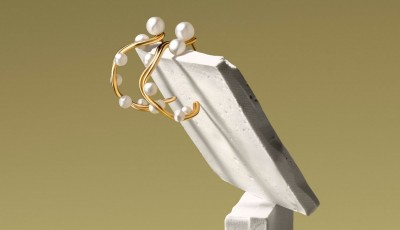The bulk metallic glasses
Owain Houghton, lecturer at Cambridge University, outlines the merits of amorphous metallic materials in the jewelry industry
Bulk metallic glasses are a relatively novel class of materials. They exhibit hardness at least twice that of conventional alloys, high elasticity, lower casting temperatures, minimal shrinkage on casting, and thermoplastic formability. In short, harder jewellery can be cast in near-net-shape or processed like plastics. Gold-, platinum- and palladium- based bulk metallic glasses are of significant interest for jewellery. However, several alloys undergo abnormally fast tarnishing, and the conditions for forming a metallic glass often conflict with hallmarking requirements. Progress on these issues is discussed, and an outlook on the future of these materials for jewellery is presented. A glass can be described as a hardened, cooled liquid. It has the atomic structure of a liquid, but the resistance to deformation of a solid; it therefore differs substantially from conventional crystalline jewellery alloys, where atoms are arranged in a regular lattice structure that repeats throughout space. While it is tempting to draw parallels with polymers and oxide glasses such as silica, these have very different structure too; chains of atoms are entangled together in such glasses, whereas metallic glasses are not formed from such chains or networks. The first metallic glass was reported in 1960 by Klement, who formed a partially glassy sample by splat cooling an Au–Si eutectic alloy. The sample was 20–30 μm thick and was extremely unstable, crystallizing at room temperature in a matter of hours. In the years since, alloys that can be cast fully glassy at lower cooling rates (and therefore in thicker sections) have been developed. The concept of a "bulk" metallic glass (BMG) was later defined arbitrarily as a sample that can be cast into the glassy state with dimensions exceeding 1 mm. The glass-forming ability (GFA) is a measure of how easily an alloy forms a glass. Alloys with high GFA have many desirable properties for jewellery (Table 1). The absence of a crystalline structure, instead a disordered array of interconnected atomic clusters, means conventional plastic deformation, caused by dislocation motion in a crystal, cannot occur within the structure of a BMG. The resulting hardness of as-cast BMGs far surpasses conventional jewellery alloys but, also, values exceed 300 HV, making them suitable for both jewellery and watchmaking.






